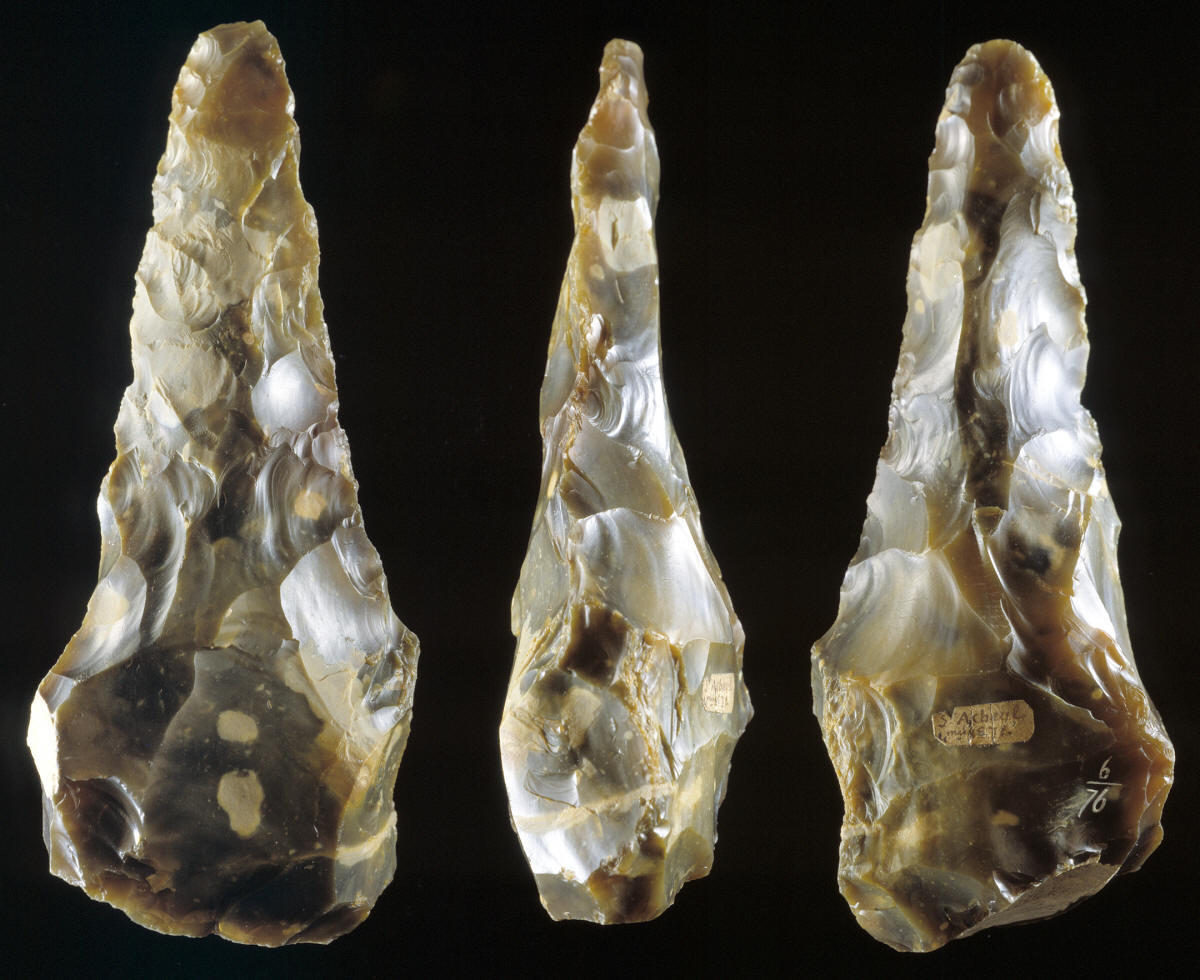|
HANDAXE
ACHEULEAN
ST. ACHEUL,
FRANCE
EST. 350,000 to 300,000 YEARS AGO
AMERICAN MUSEUM OF NATURAL
HISTORY COLLECTION
RETURN TO PAGE 2
COPYRIGHT MAY 31, 2008 PETER A. BOSTROM
This handaxe was found in Acheulean deposits at the site of St.
Acheul near Amiens in northern France. This site dates to the Middle
Pleistocene and dates to sometime between 350,000 to 300,000 years
ago.
Jim G. Shaffer, PhD. describes this handaxe as: "A good example of
a "Micoquian" or pointed style biface. Both surfaces of this biface
are covered with small, shallow and elongated flake removal scars
indicating that at least the final shaping and retouching of this
artifact was done with a soft hammer. The pointed end has been
extensively retouched to form relatively straight edges, and to make
this section of the artifact significantly thinner than the basal
part. A very interesting feature of this biface is the thick basal
region, Unlike most bifaces the cutting edge is not continuous
around the perimeter of the artifact, indeed the cutting edge
appears to have been purposefully blunted by the removal of flakes
in the basal region. This may have been done with the intent to
facilitate the holding of this artifact in the hand while the
thinner, sharper pointed region of the biface was being used. The
small, deep flake scars along the edges in the basal region may
reflect attempts to thin this section of the artifact."
This handaxe is made of very high quality greenish black/gray
chert. It measures 6 9/16 inches (16.7 cm) long, 2 5/8 inches (6.6
cm) wide and 1 13/16 inches (4.6 cm) thick.

|